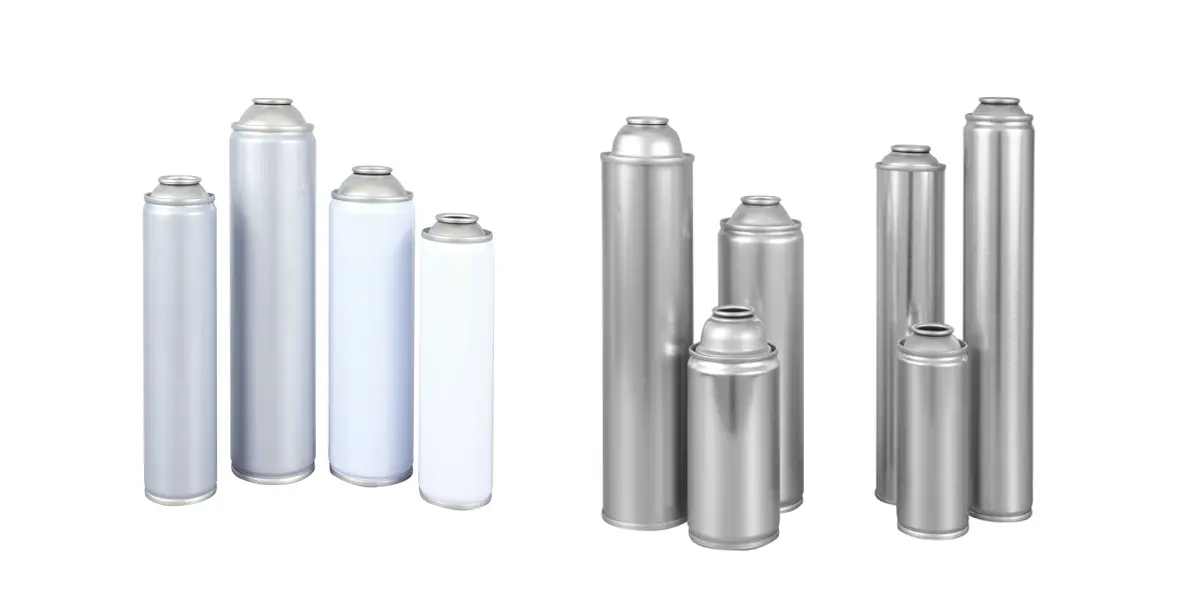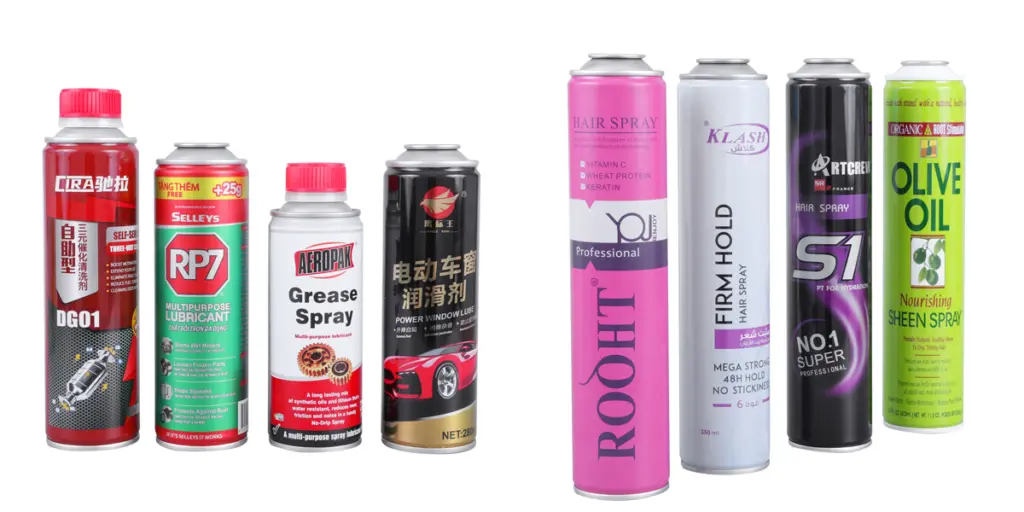
Guide to the Best Aerosol Packaging
The development of aerosol packaging has gone through 82 years of development history from 1942 to 2024. The first aerosol cans were produced to protect American soldiers from insect bites, which would lead to malaria and other diseases caused by mosquito bites. Since then, the packaging of aerosols has also developed rapidly into personal care, home care, car care and other industries. Products are spread all over the world. Common aerosol packaging products include hair spray, detergents, and lubricants. , graffiti spray paint, etc.
The aerosol container is usually a round bottle or can made of aluminum, tin or plastic, with a long tube connected to the aerosol valve. The user can gently press the valve to dispense the product inside with foam or Spray in the form of a spray
Packaging requirements for aerosols
The process of making aerosol packaging from production to the hands of users is very rigorous. This process includes:
- Material selection: The first condition for aerosol packaging is that it must have high-quality sealing and anti-corrosion properties. Therefore, manufacturers usually use tin, aluminum or degradable plastics as materials. These three materials are usually used on the market. The aerosol cans are usually reusable or recyclable.
- Sealing and anti-corrosion: ensure that the aerosol product will not leak and the product will not react with the aerosol packaging material to cause the product to deteriorate.
- Spray performance: When users use aerosol products, the liquid sprayed out can be sprayed normally without clogging or uneven spraying.
- Labels and instructions: According to the aerosol products in different industries, instructions on the aerosol packaging are required, including instructions for use, aerosol ingredients, storage methods, etc., so that users can clearly understand the relevant information of the aerosol to prevent accidents.
- Safety: Aerosol packaging needs to undergo strict quality inspection by the aerosol can manufacturer before leaving the factory, including the quality of packaging materials, sealing, rubber gaskets and other integrity to prevent user accidents
Benefits of aerosol packaging
Aerosol packaging allows for easy upright positioning for even distribution of liquid and complete control resulting in no waste.
Why would you consider aerosol packaging for your product? In fact, this type of packaging has many benefits worth using, including
- Convenient to use: The aerosol spray is very simple to use. Just use one finger to point in the direction you need to spray and press the nozzle to spray. No cumbersome operations are required.
- Easy to carry: Common aerosol packaging is usually easy to carry. Convenient for users to put the product in their pocket, bag or handbag and use it at any time
- Safety Features: The aerosol exists in a sealed and corrosion-resistant environment, meaning breakage, spills, leaks and deterioration are less likely. This is also an effective way to ensure product quality and prevent tampering.
- Control: With the push of a button, consumers can control the amount of spray they want dispensed. This minimizes waste
- Recyclable: Like other aluminum packaging, aerosol cans are 100% infinitely recyclable or reusable.

Aerosol packaging considerations
Since the needs of different aerosol industries are different, users need to determine the size and basic color of the container based on the product. It is important to determine the size and basic color of the container. The size range of aerosol cans is usually 35mm-70mm in diameter and 70mm-265mm in height. The most common opening in the top of a jar is one inch. As for primer color options, there are two, white or clear.
Once you determine the size and color coating options, you can determine how to decorate your jars to match your product needs. Available decorations include exterior packaging designs (based on designers using unique design techniques to incorporate your product features into the packaging). presented to the user) and shape design (round, oval, flat/conical or soft/bullet-shaped)
Another important thing to consider is Proposition 65 and BPA standards. Because BPA is considered to have possible effects on human health, some countries and regions have regulations and standards in place to limit or ban BPA in specific products. Therefore, you need to consider whether the product meets BPA standards according to the packaging and sales location of the product. If your product does not contain any BPA, your product will become more and more popular in other countries and regions.
